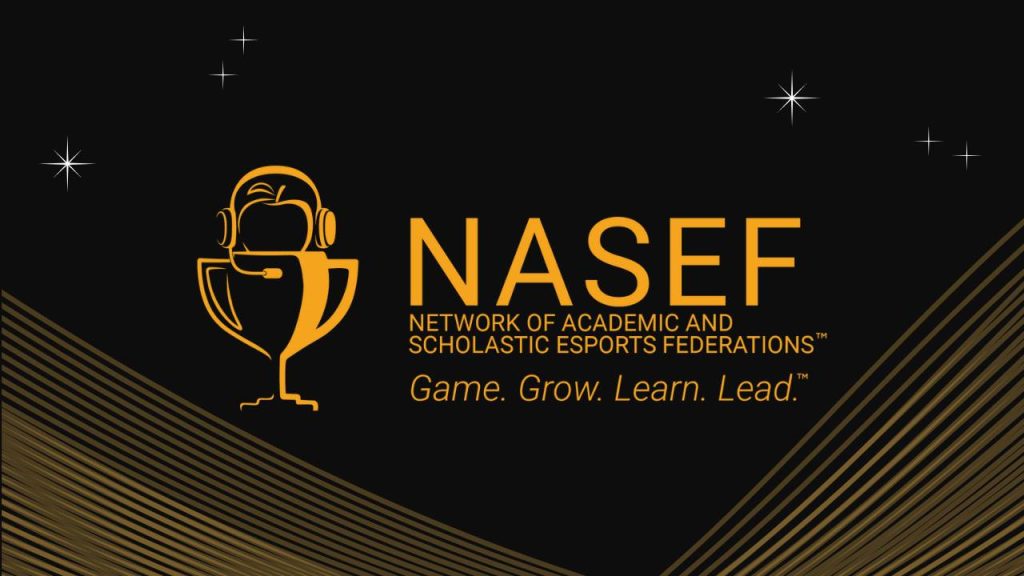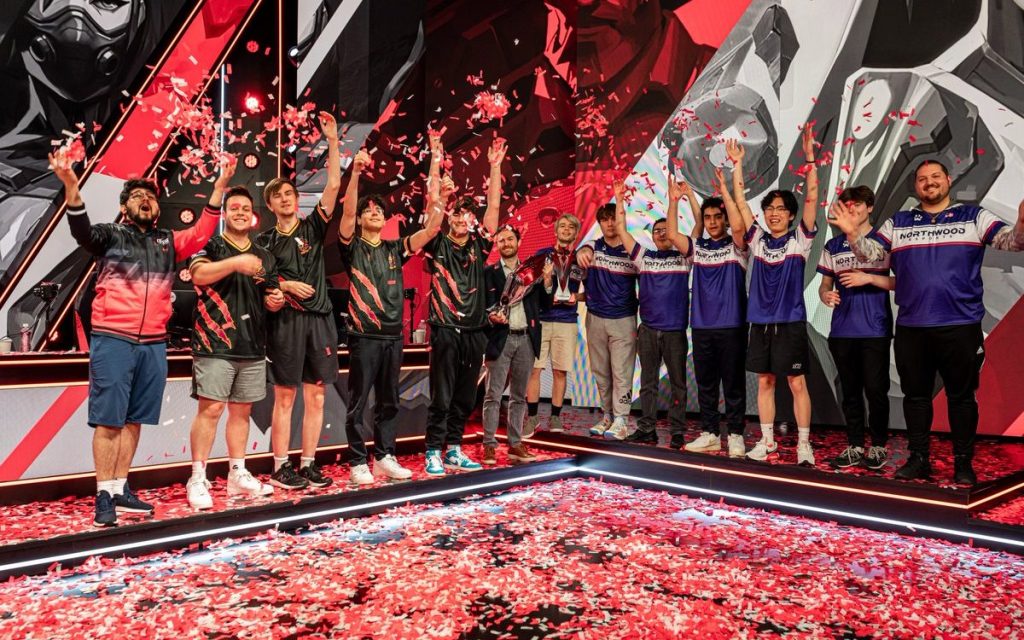
The scholastic and collegiate sectors have been one of the success stories of esports, a trajectory that has remained unchanged even as the rest of the industry’s fortunes have changed over the last couple years.
Amid growing difficulties at the professional tier of the esports pyramid, competitive gaming is being integrated at the educational level more successfully, globally and noticeably than ever before.
One of the protagonists in this space is NASEF, the Network of Academic and Scholastic Esports Federations. We sat down with the non-profit organisation to better understand the work it does in the global scholastic (K-12) space.
What is NASEF?
NASEF was founded by Gerald Solomon, now Executive Director, in 2018. Solomon had been working as the global philanthropic director for the Samueli Foundation, a non-profit organisation focused on STEM education and youth development. He soon realised that esports was an ideal vehicle to reach those goals. “I went back to the foundation and I said, if we really want to have this global impact on everyday life for kids, then I think esports is the proverbial trojan horse,” Soloman explained.
NASEF was soon spun out into its own non-profit organisation, which now claims to reach 300,000 kids globally — its core mission being the use of games as a vehicle to develop life skills and careers using project-based learning. NASEF is funded by philanthropy, donations and commercial sponsorships.
NASEF was originally founded as the North America Scholastic Esports Federation. As NASEF got more involved internationally, and joined forces with the International Esports Federation, there was global demand for its work. Its current name is a recent nifty backronym that reflects the organisation’s expanded global scope.
NASEF exists within the structure of the World Wide Scholastic Esports Federation (WWSEF), the parent entity created when NASEF was spun out of the Samueli Foundation. The WWSEF, which sits above NASEF and has its own board, acquired control of the United States Esports Federation in April 2023, which now acts as the organisation’s competitive arm.

What does NASEF do?
NASEF’s mission is to establish “project based learning through the lens of esports in a digital world,” according to Solomon.
The organisation helps instil career and life skills in children through esports and gaming, a growing trend as educational institutions seek to cater to demand for digital skills and leverage passions for gaming. Claire LaBeaux, NASEF’s Chief Advancement Officer, in particular highlighted how the organisation “provides opportunities for students to use esports as a platform to acquire STEAM-based skills of communication, collaboration and problem solving needed to thrive in work and in life.”
NASEF worked with experts and local stakeholders to write an esports- and gaming-focused curriculum, which got approved by the State of California in 2018 and 2019. The curriculum, which NASEF does not charge for, has since been rolled out to 5000 schools.
Alongside an esports curriculum — which there’s growing demand for amongst educational institutions — NASEF also leverages competition itself. The non-profit runs free scholastic esports tournaments, ‘Beyond the Game’ challenges, and Minecraft challenges, which it uses to keep kids engaged and create opportunities for students to mix gaming and learning.
The organisation’s main focus is on using active and project based learning to reach children, particularly those left out of, or struggling to engage in, conventional classroom settings. To that end, it has worked with academic researchers, including from the University of California, Irvine (UC Irvine), to design evidence-based esports models that can boost interest in and attendance at school, improve learning outcomes, and develop positive relationships.

Educational impact
NASEF has found that a lot of students who join esports clubs to take part in its ecosystem are students that haven’t connected anywhere else in school. In the Moreno Valley school district, for example, 60% of participating students had never been in any club before on campus, and of those the majority were seniors in high school, LaBeaux highlighted.
“One massive outcome is social emotional connections, and the other is interest in STEM careers,” she added. NASEF says it adopts a very intentional approach to its teaching — something it manages to achieve through a structured framework which includes oversight and mentoring.
“It’s not come play and leave,” explained Soloman. “It’s, let’s build a business plan, let’s build a fundraising plan, let’s build your website, let’s go ahead and create social media platforms. Through what they enjoy doing we have them actually experience the kinds of activities and gain the skills that are transferable to all types of industries, not just within esports.”
The outcome is that children become more engaged in their education — and may be performing better as a result. Findings from NASEF’s research partner, the UC Irvine-based Connected Learning Lab, show gains amongst participating students in solving and defining problems, communication, argument construction and critiquing, alongside significant gains in social and emotional learning and mentorship.
Further research found that 100% of parents reported that their children developed community skills that they hadn’t exhibited before after engaging in NASEF’s activities. 62% of parents reported improvements in general life skills, 38% an increase in communication and 31% improved strategic thinking, amongst other benefits.
23% of parents whose children engaged in esports through NASEF said their child’s GPA went up and 46% reportedly saw improvements in college or career preparation. UC Irvine received Institutional Review Board (IRB) approval for its research, a top-grade standard for education research worldwide that proves efficacy and independence of research methods and data.
“A lot of times, people say, ‘yeah, well, what do the parents think?’ Let me tell you, the parents are pretty darn excited,” LaBeaux laughed.
Some barriers remain in getting sceptical parents and educators on board about bringing esports into schools, inside and outside the curriculum. Esports is a black box to many outside the industry, where misconceptions abound about the supposed ills of gaming — not helped along by the fact that some UK esports degrees, for example, have developed a bad reputation.
However, with education and growing awareness of the impact the likes of NASEF are having, that is changing. The data speaks for itself, Labeaux argued.
“Speaking as a parent, you want the best for your kid and a lot of parents have seen their kids struggle. And when they see the light in their eyes when something that they care about is all of a sudden important in school, it shifts everything for them.”
Supported by the Network of Academic and Scholastic Esports Federations
